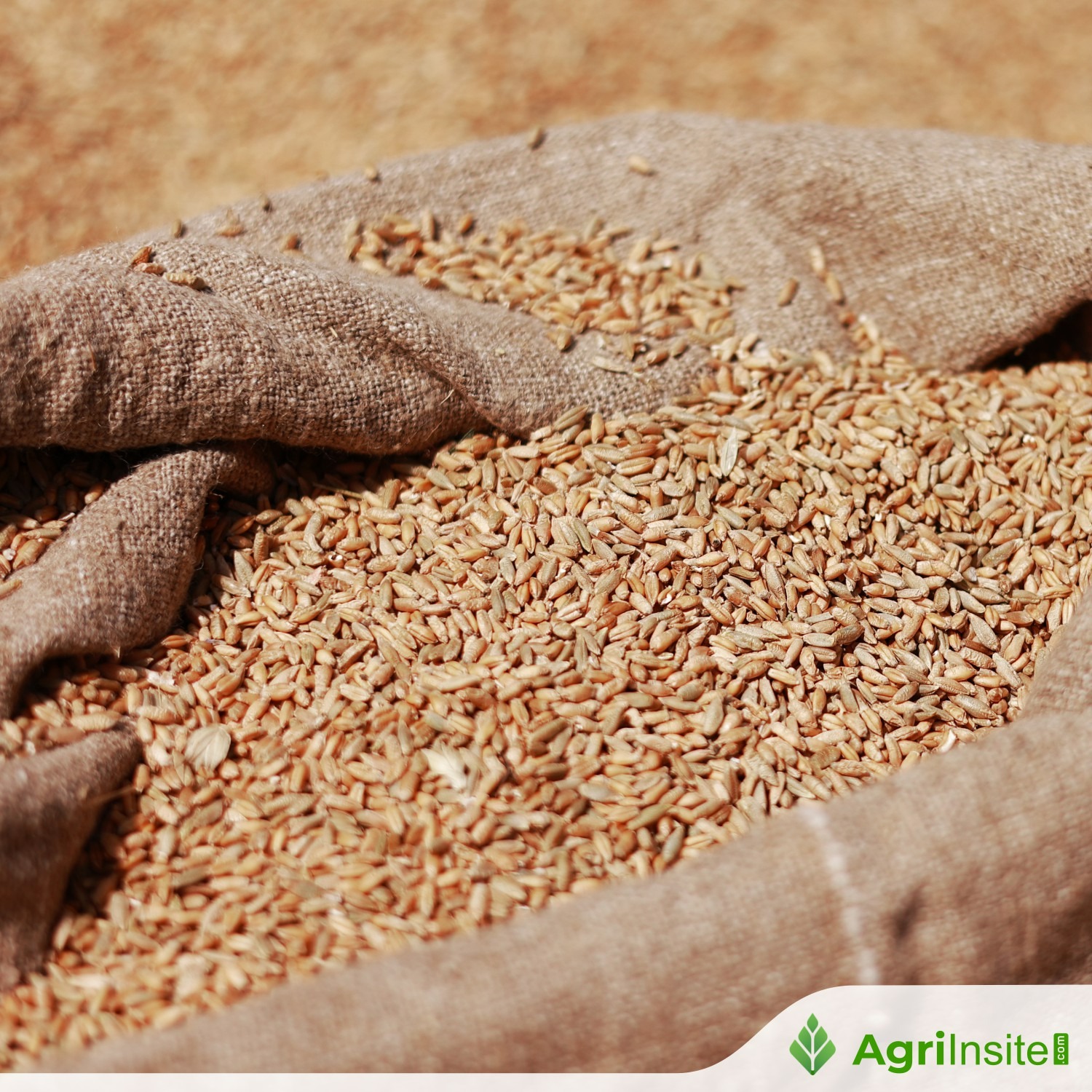Ahead of Union budget, why food inflation remains a challenge for wheat, sugar, edible oils and potato

Retail food inflation softened to 8.39% year-on-year in December, from 9.04% and 10.87% in the preceding two months. However, any further easing is contingent on the supply situation — finely balanced in key commodities — and on how long the current winter lasts.
Retail food inflation softened to 8.39% year-on-year in December, from 9.04% and 10.87% in the preceding two months. However, any further easing is contingent on the supply situation — finely balanced in key commodities — and on how long the current winter lasts.
Farmers have, as on January 17, sown 320 lakh hectares (lh) area under wheat in this rabi (winter-spring) season, more than the corresponding 315.63 lh of 2023-24. Acreages have also risen in chana or chickpea (from 95.87 to 98.28 lh), maize (21.32 to 22.90 lh), potato (19.32 to 19.71 lh), onion (6.97 to 7.70 lh) and tomato (1.51 to 1.96 lh), while falling for mustard (93.73 to 89.30 lh).
The higher area is mainly courtesy of the surplus southwest monsoon rainfall, helping in filling up reservoirs, recharging groundwater aquifers and providing adequate soil moisture for rabi sowing.
But more area planted is no guarantee of bumper harvest translating into reduced food price pressures. The supply position remains tight at least in the following commodities.
Wheat
The accompanying table shows wheat stocks in government warehouses, at 184.11 lakh tonnes (lt) on January 1, to be the fifth lowest for this date after 2008. Wheat stocks in government warehouses, at 184.11 lakh tonnes (lt) on January 1, are the fifth lowest for this date after 2008. (Express graphic: Ritesh Kumar)
Wheat stocks in government warehouses, at 184.11 lakh tonnes (lt) on January 1, are the fifth lowest for this date after 2008. (Express graphic: Ritesh Kumar)
Wheat is wholesaling in Delhi at Rs 3,150-3,200 per quintal, as against Rs 2,550-2,600 last year at this time. That has partly to do with the Narendra Modi government offloading only 12.42 lt of wheat under its open market schemes during April-December, as compared to 100.88 lt for the whole of 2023-24 (April-March). The Centre hasn’t been very aggressive with open market sales, despite its stocks being marginally higher than last year. The reason could be uncertainty over the size of the wheat crop to be harvested from end-March to April.
The 2021-22, 2022-23 and 2023-24 crops were subnormal, unlike those of the previous three years. If the new crop isn’t great, the government may struggle to procure enough grain for the public distribution system, especially with open market rates ruling way above its declared minimum support price (MSP) of Rs 2,425/quintal. Wheat procurement was only 266.05 lt in 2024, 261.97 lt in 2023 and 187.92 lt in 2022, down from the highs of 433.44 lt in 2021 and 389.93 lt in 2020.
It is possible that the government may offload more wheat in the weeks closer to the harvesting season, so that open market prices don’t deviate excessively from the MSP and a reasonable quantity of grain is procured. The best-case
scenario is, of course, a bumper crop.
What are the prospects for that? Everything rests on temperatures. Much of wheat grain development — when the kernels form, accumulate starch and protein, and ripen after hardening and drying — happens from March. Maximum temperatures should ideally be in the early-thirty degrees range during this period. The longer it extends, the better the grain-filling and the higher the yields. Contrarily, any mercury surge or early summer onset can cause premature grain ripening and lower yields.
This time, sowing itself was delayed, as the average (mean) temperature in the main wheat belt of northwest India was 1.90 degree Celsius above normal during October and 1.37 degree during November.
“In my area, 90-95% of wheat sowing is normally over by November 15. This season, it was hardly 15-20% and sowing continued till December 4-5,” noted Pritam Singh, a farmer from Urlana Khurd village in Haryana’s Panipat district.
Sowing picked up only after mid-November and December, which recorded a mean temperature anomaly of minus 0.52 degrees Celsius in northwest India. December also saw most wheat-growing areas, barring eastern Uttar Pradesh (UP) and Bihar, receive timely showers.
The encouraging news is that the winter, which took time to set in, has since been good. With global weather agencies forecasting the present mild La Niña conditions — which typically bring cooler-than-average temperatures in India — to persist through February-April, one can hope for an overall decent wheat crop.
Sugar
The National Federation of Cooperative Sugar Factories has pegged India’s sugar production in the 2024-25 season (October-September) at 270 lt, down from 319 lt in 2023-24. Output declines are expected for UP (103.65 lt to 93 lt), Maharashtra (110.20 lt to 86 lt) and Karnataka (53 lt to 41 lt).
The above estimate is below even the 280-lt projection made last month, with UP’s at 98 lt, Maharashtra’s at 87 lt and Karnataka’s at 45 lt. “Maharashtra and Karnataka had drought in 2023, reflected in this season’s cane availability (sugarcane is a 10-12 months duration crop). On top of that, the crop has suffered early flowering in parts of both states,” said Prakash Naiknavare, managing director of the federation.
Sucrose (sugar) accumulation in cane occurs during the crop’s vegetative and maturation stages. In the event of flowering, the cane not only stops growing, but also the sucrose stored in the stalks moves to the buds. It, then, reduces the cane weight as well sucrose content in the juice. Early flowering — caused by an extended dry spell in 2023-24, followed by excess rains in October — could lead to most Maharashtra mills ceasing crushing by end-March for want of cane.
In UP, cane yields have taken a hit from red rot (a fungal disease) and top shoot borer (an insect pest) attacks. The predominantly grown variety, Co-0238, has become particularly susceptible to red rot. The replacement varieties – such as Co-0118, Co-14201, Co-15023 and CoS-13235 – haven’t really found acceptance with farmers yet.
With estimated opening stocks of 80.23 lt, 270 lt production, domestic consumption of 295 lt and 10 lt exports, the current season may close with just over 45 lt of sugar. That’s equivalent to about 1.8 months of consumption — not too high, but not low either, given the likely bumper production in 2025-26 resulting from the surplus 2024 rains.
Potato
Farmers generally plant potato from mid-October to mid-November. High temperatures this time delayed plantings by up to 15 days. The seed potatoes sown on time did not sprout properly and form sufficient number of tubers.
“Germination and tuberisation was definitely an issue, as the temperatures weren’t low enough at the start,” said S Soundararadjane, CEO of HyFarm, the farmer connect arm of Ahmedabad-based HyFun Foods Pvt. Ltd.
The subsequent period, however, was marked by low night temperatures and long daylength with bright sunshine, favourable for photosynthesis and growth. “We have had fewer tubers, but better tuber bulking. The tubers formed have larger size and higher weight. Also, there has been minimal incidence of disease, whether PVY (potato virus Y) or blight. On the whole, yields should be as good or better than last year,” he added.
The possibility of a better-than-expected crop — potato is harvested from mid-February to March — has led to average retail prices dropping to Rs 20 per kg, from Rs 30 a month ago and Rs 40 two months ago.
Edible oils
There’s no such comfort in edible oils. All-India modal (most-quoted) retail prices are now nearly Rs 145/kg for palm, Rs 155/kg for soyabean and Rs 165/kg for mustard oil, against their corresponding year-ago levels of Rs 90, Rs 110 and Rs 135 respectively.
The above inflation is partly on account of the Modi government, on September 14, hiking the effective import duty on crude palm, soyabean and sunflower oil from 5.5% to 27.5%. Equally important has been Indonesia raising its mandatory blending of palm oil in diesel from 35% to 40% starting this year. It has pushed up the landed price of the three crude vegetable oils imported into India to $1,150, $1,120 and $1,200 per tonne, from their corresponding year-ago average of $910, $940 and $930, compounded by the rupee’s weakening against the dollar.
To read more about Wheat News continue reading Agriinsite.com
Source : The Indian Express















